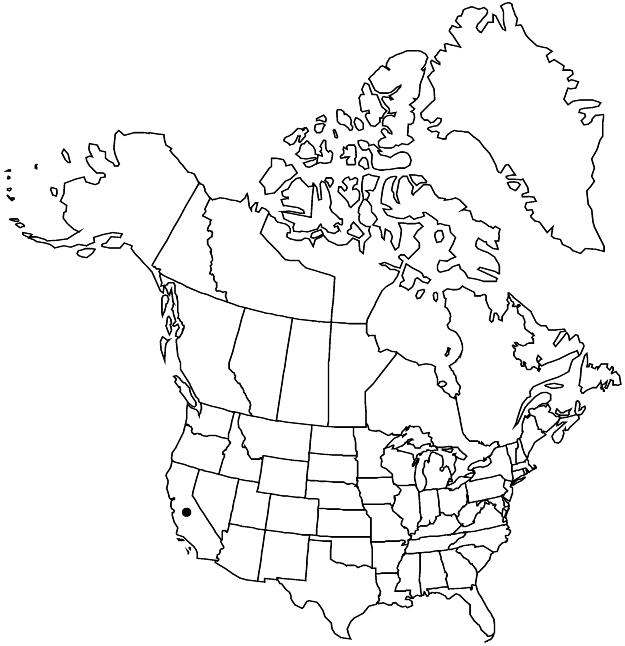Difference between revisions of "Eriogonum covilleanum"
Proc. Calif. Acad. Sci., ser. 4, 20: 138. 1931.
FNA>Volume Importer |
imported>Volume Importer |
||
| (4 intermediate revisions by one other user not shown) | |||
| Line 8: | Line 8: | ||
}} | }} | ||
|common_names=Coville wild buckwheat | |common_names=Coville wild buckwheat | ||
| + | |special_status={{Treatment/ID/Special_status | ||
| + | |code=E | ||
| + | |label=Endemic | ||
| + | }} | ||
|basionyms= | |basionyms= | ||
|synonyms={{Treatment/ID/Synonym | |synonyms={{Treatment/ID/Synonym | ||
|name=Eriogonum vimineum var. covilleanum | |name=Eriogonum vimineum var. covilleanum | ||
|authority=(Eastwood) S. Stokes | |authority=(Eastwood) S. Stokes | ||
| + | |rank=variety | ||
}} | }} | ||
|hierarchy=Polygonaceae;Polygonaceae subfam. Eriogonoideae;Eriogonum;Eriogonum subg. Oregonium;Eriogonum covilleanum | |hierarchy=Polygonaceae;Polygonaceae subfam. Eriogonoideae;Eriogonum;Eriogonum subg. Oregonium;Eriogonum covilleanum | ||
| Line 36: | Line 41: | ||
-->{{#Taxon: | -->{{#Taxon: | ||
name=Eriogonum covilleanum | name=Eriogonum covilleanum | ||
| − | |||
|authority=Eastwood | |authority=Eastwood | ||
|rank=species | |rank=species | ||
| Line 50: | Line 54: | ||
|publication title=Proc. Calif. Acad. Sci., ser. | |publication title=Proc. Calif. Acad. Sci., ser. | ||
|publication year=1931 | |publication year=1931 | ||
| − | |special status= | + | |special status=Endemic |
| − | |source xml=https:// | + | |source xml=https://bitbucket.org/aafc-mbb/fna-data-curation/src/2e0870ddd59836b60bcf96646a41e87ea5a5943a/coarse_grained_fna_xml/V5/V5_868.xml |
|subfamily=Polygonaceae subfam. Eriogonoideae | |subfamily=Polygonaceae subfam. Eriogonoideae | ||
|genus=Eriogonum | |genus=Eriogonum | ||
Latest revision as of 22:14, 5 November 2020
Herbs, erect, 1–4 dm, glabrous, green to reddish. Stems: aerial flowering stems erect, 0.3–1 dm, glabrous. Leaves basal; petiole 1–4(–5) cm, tomentose; blade suborbiculate to reniform, (0.3–)0.5–1.5 × 0.5–1.5(–1.8) cm, densely white-tomentose abaxially, glabrous and bright green adaxially. Inflorescences cymose, infrequently distally uniparous due to suppression of secondary branches, open, 5–35 × 5–30 cm; branches glabrous; bracts 1–2 × 0.5–1 mm. Peduncles absent. Involucres terminal at tips of slender branchlets proximally, not appressed to branches, turbinate, 2–2.5 × 1–1.5 mm, glabrous; teeth 5, erect, 0.4–0.8 mm. Flowers 2–2.5(–3) mm; perianth pink at early anthesis, becoming white to rose or yellow, minutely puberulent; tepals monomorphic, narrowly elliptic; stamens included, 1.7–2 mm; filaments glabrous. Achenes light brown, 3-gonous, 1.8–2 mm. 2n = 34.
Phenology: Flowering Apr–Aug.
Habitat: Shale or serpentine outcrops and slopes, chaparral communities, oak and pine woodlands
Elevation: 200-1400 m
Discussion
Eriogonum covilleanum is encountered infrequently in the Inner Coast Ranges of central and southwestern California (Fresno, Kern, Merced, Monterey, San Benito, San Luis Obispo, Santa Barbara, Santa Clara, Stanislaus, and Ventura counties). On occasion it can be locally common but is never abundant or weedy. It is often found growing with other annual wild buckwheats, and care must be taken to sort the species.
Selected References
None.
